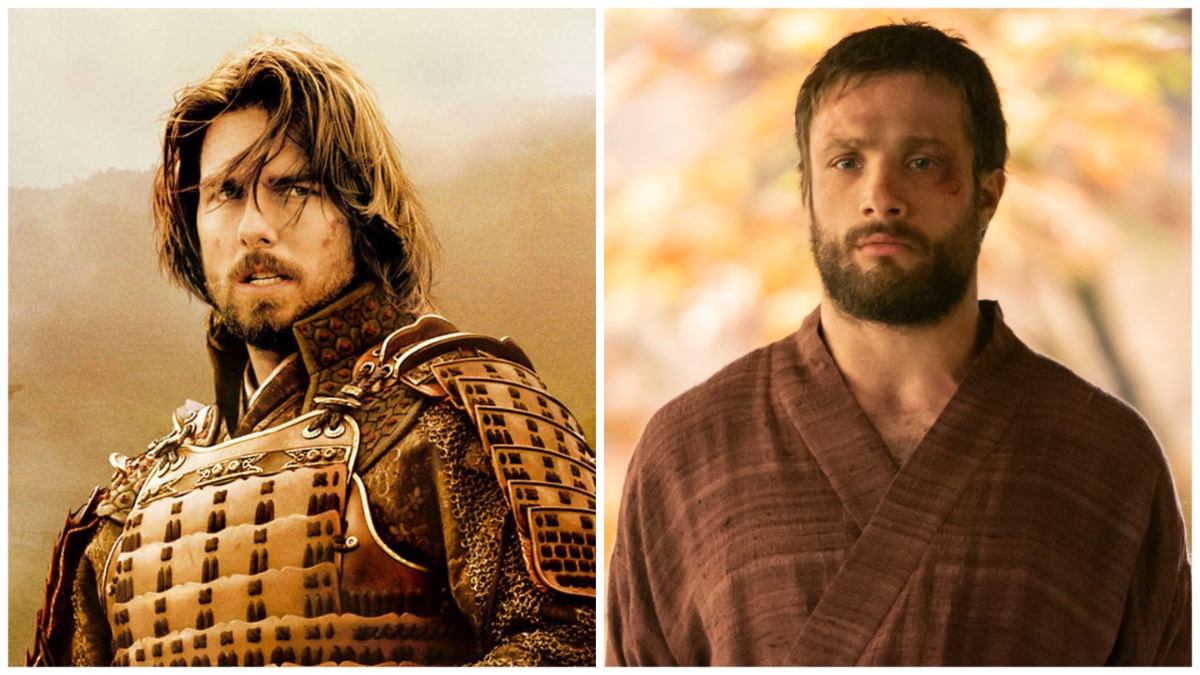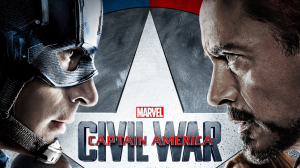
This article contains mild spoilers for Shōgun and major ones for The Last Samurai.
A lonely Westerner who seems lost before he even steps off his ship; a strange land filled with ritualized grace and deadly niceties; and a culture shock that is both intoxicating and intimidating—even before our stranger sees the samurai masks and katana blades come out. This could very well be a description of the odyssey which English seaman John Blackthorne (Cosmo Jarvis) finds himself on in FX’s astonishing new limited series, Shōgun. Yet I’m actually describing a popular Tom Cruise vehicle loosely set in the same aesthetic: The Last Samurai.
Released in December 2003 to positive reviews and impressive box office (back when adult-skewing dramas could regularly net $454 million at the world box office), director Edward Zwick’s The Last Samurai was applauded in its time for its pensive soulfulness and kinetic action sequences. It also, of course, was embraced because it featured one of the most popular movie stars on the planet in an exotic locale and even more exoticized attire. For while a charitable reading of the film’s title is to suggest it’s about the truly great performance of the film—Ken Watanabe as a rogue samurai attempting to thwart the Westernization of his homeland—it is still Cruise in crimson red armor beneath “The Last Samurai” lettering on the poster.
The Last Samurai is, indeed, a thoughtful, excellently crafted, and superbly made variation on a particular trope of cinema we now typically call the “white savior movie,” although it’s debatable who, if anyone, is saved in The Last Samurai. But however you slice it, the film sits comfortably alongside Dances with Wolves, Avatar, and other stories about a white man losing himself to a “native” culture that he comes to idealize and lead.
Which is what makes revisiting the otherwise entertaining The Last Samurai in the wake of Shōgun’s popularity such a curious contrast. The new TV series is itself adapted from James Clavell’s 1975 novel of the same (and which was previously adapted for the small screen in a 1980 miniseries). And by virtue of its premise where we’re introduced to the customs of feudal Japan through a Western lens—Clavell was himself a British citizen who wound up in a Japanese POW camp in World War II—Shōgun could have played out much the same way: as a tale of Western apprehension and awe at the Bushidō morality code. And yet, the 21st century TV series that has come out of Clavell’s more archetypal text has proven so much richer and more complex. In the new series, Blackthorne is not our natural protagonist but rather a sympathetic piece of a far greater ensemble. That canny transition of perspectives hints at Shōgun’s larger grandeur. It also creates a fascinating contrast with a still fairly beloved Tom Cruise movie that came out in this century.
A Story About Japan Versus a Story About the West
It is probably no accident that between Shōgun and The Last Samurai, we have two projects which bookend the West’s relationship with feudal Japan. In Shōgun, viewers are asked to witness a fictionalized account of the first time an Englishman stepped foot on Japanese soil in 1600—the real-life counterpart to Blackthorne being a British pilot named William Adams—and in The Last Samurai, we follow an entirely fictional American U.S. Army captain, Nathan Algren (Cruise), as he bears witness to a romanticized depiction of the upheaval which occurred after the Meiji Restoration in the 1860s and 1870s—which is to say when the West came back with a vengeance to Japan.
It’s even fun to realize that the events of Shōgun directly influence The Last Samurai since the series is about the birth of the Tokugawa shogunate, which essentially banned Western culture and (eventually) Westerners for the next 200 years. This did not end until the American Navy showed up in Tokyo Bay in 1853 and threatened Japan to open for trade with the West at literal gun and cannon point.
Still, the subtlest and most profound difference between the two American productions, then, is that while Shōgun (2024) is about feudal Japan as understood from a Western gaze, The Last Samurai is about the West looking at itself in a Japanese mirror. It’s a minute distinction, but one with profound effects on both projects.
While Shōgun admittedly begins with Blackthorne realizing he and the remainder of his crew are about to be marooned on the mysterious island of Japan, the series is ultimately about the complex and confounding world he finds himself in as Lord Yoshii Toranaga (Hiroyuki Sanada, who also appears in The Last Samurai) plays a shrouded game of thrones with Japan’s other great clan leaders on the cusp of civil war. The series is not about Blackthorne, but this larger chessboard on which the Englishman has made himself (and his cannons) a highly valued piece.
Conversely, The Last Samurai eschews nuance in favor of broad Hollywood sentimentality and movie star necessities. While we first glimpse Watanabe’s brilliant portrayal of Lord Katsumoto (a fictionalized version of the real-life rebellious samurai Saigō Takamori) during the film’s prologue, that opening is actually narrated by an alien (and English) voice which insists, “Japan was made by a handful of brave men. Warriors willing to give their lives for what seems to have become a forgotten word: honor.”
Right off the bat, The Last Samurai asks us to romanticize and reduce samurai culture as not a thousand-plus year-old profession and class in a medieval system of governance, but rather as an ideal impossible for American culture (either in the 19th century or implicitly today) to attain. The prologue’s narrator is asking us to compare Watanabe’s visual sense of Zen and honor (as he is literally meditating) with where we next find our true protagonist, Cruise’s Capt. Algren: at the bottom of a bottle, with the retired cavalry officer drunk and hungover as he sits in a dark room decorated by American flags left to wrinkle on the ground.
Like Kevin Costner’s Civil War veteran Lt. Dunbar in Dances with Wolves, Cruise’s Algren is weighed down by the guilt and atrocities he witnessed while riding beneath the American flag. Samurai even takes it one step further since Algren’s trauma stems from the horrors he saw committed by both sides—including himself—during the various American Indian wars on the frontier. While we eventually learn of Katsumoto’s grievances with imperial Japan’s rush toward modernization, it is told mostly in broad strokes and with a single, caricatured villainous bureaucrat he must overcome: a Japanese railroad baron (Masato Harada) who whispers poison in a young emperor’s ear. By comparison, Algren’s shame and disdain for his former commanding officer—a fellow by the name of Custer who got 211 fellow cavalrymen massacred—is much more acute and inescapable.
The Last Samurai is not the story of an American encountering the last days of the samurai, but rather how the samurai helped an American put to bed the demons of his experiences in the American West. As such, the samurai are themselves only understood through those rose-tinted glasses that the film’s opening narration instructs us to use: warriors willing to give their lives for that “forgotten word” of honor.
It’s a classic, if better intentioned and articulated, replay of the “noble savage” trope in Dances with Wolves. As such, the only dimensionality offered to that lifestyle is by the performances, which include future Shōgun producer and star Sanada, as well as a magnificent Watanabe who gave an Oscar-nominated turn as the samurai rebel who takes a curious interest in Cruise’s bewildered American prisoner—a bit like how a gifted veterinarian might adopt and nurse a wounded stray dog. Screenwriter John Logan provides enough nuance to that relationship that Watanabe can flesh it out to haunting effect. Still, at the end of the day, the samurai culture is merely a frame in which Cruise’s protagonist can stare at his own reflection—and eventually shave off the trauma of his past by donning a kimono and katanas.
Meanwhile in Shōgun Blackthorne does eventually transition into wearing Japanese attire, including the katanas because he is told to by his captors/hosts/maybe pseudo-friends. However, the show never feels the need to depict the Englishman “going native” as an act of either salvation or heroism. There is, indeed, something faintly comical about Jarvis’ stranger stumbling through high Japanese society with blades he doesn’t know how to use and bouncing off folks who view him a bit like their court jester.
The culture clash likewise becomes a much richer source of drama and tragedy when it is not only about how it affects Blackthorne’s well-being. In fact, it is arguable the true star of the show is neither the Westerner nor the would-be shōgun of its title, Sanada’s commanding Toranaga. Instead its Toda Mariko (Anna Sawai) who walks away with the series. She’s a woman of an ancient house which has fallen into recent disgrace due to the actions of her father. As a consequence, Mariko yearns to redeem her honor by committing seppuku (ritualized suicide). Yet her lord Toranaga forces her to endure, including as Blackthorne’s translator (having converted to Catholicism, Mariko is well-studied in Western languages).
It is how Mariko chooses to interpret Blackthorne’s brutish European sailor outbursts (or not) that becomes the source of humor, horror, and sometimes despair in the series. Theirs is a complex romance, and much like the relationship the Westerner also has with Toranaga and the other members of the ensemble, it is not only in service to his betterment. The longer the series goes on, the more Blackthorne adopts positive aspects of Japanese culture including (humorously) learning to take a bath everyday. Yet a running theme is how everyone in the show refers to the other cultures as barbaric—be they English, Japanese, or Roman Catholic Portuguese—while all sharing the capacity to commit atrocities in their own way.
Blackthorne does not see “honor” he hopes to emulate in Toranaga, Mariko, or the wily and untrustworthy Yabushige (Tadanobu Asano). But he does witness with immense skepticism things that are as troubling to our modern worldview as Blackthorne’s early modern English one. His disgust with Mariko’s thirst for suicide, as well as how other people he meets are so willing to throw away their lives to win a political argument, is treated as an equally valid counterpoint to any romanticization of the Bushidō code.
By avoiding the ethnocentric view that most Western fiction pursues in regard to feudal Japan, Shōgun becomes an actual exploration of feudal Japan, if from a Western POV.
Who Does and Does Not Need to Be Saved
There of course remains the aspect of The Last Samurai which comes into sharpest criticism these days: its standing as a white savior movie. The film undeniably and intentionally checks many of the boxes found in this cliché: a white man meets a native people he comes to admire while also simultaneously slotting into the role of a leader amongst them.
While Watanabe’s Katsumoto is the true clan leader in the film who redeems Algren, the film rather incredulously sees the Tom Cruise character ride ahead of Katsumoto and all the other samurai as they leave for battle at the end of the film, and later while riding slightly behind Katsumoto into the final battle, Cruise is still allowed to dominate the shot over Watanabe and be in a greater pride of place than Katsumoto’s actual lifelong right-hand man, Ujio (Sanada). It is also the American’s counsel Katsumoto seeks before they ride to glory and doom against modern weapons of war.
However, it should be noted that as a brilliant screenwriter, The Last Samurai’s John Logan seems aware of the loaded connotations he’s playing with and at least tries to sidestep them more gracefully than films with similar narratives. The samurai culture, again, fixes the white man (the point of the film), but you could also say they are the ones who therefore save him. Furthermore, he doesn’t actually lead them to victory. After witnessing how the American cavalry ultimately decimated various Indigenous tribes of the American West, Algren is aware that Katsumoto’s cause is doomed when he rides beside him—and indeed they are massacred almost to a man.
Still, the story is about how the native culture fixes the white man’s soul, and the white man at least guides them to the most brilliant defeat possible against cannons and rifles. (Also amusing fact: to even further simplify its glorified image of the samurai, the film ignores that samurai had actually been using gunpowder for more than a century up to this point, including Katsumoto’s real-life counterpart in the failed 1877 uprising.)
Comparatively, Blackthorne makes himself useful to the budding shogunate in the new TV series—but only to sa point. He and Toranaga have a slow-boiling bromance that heightens when the Briton teaches the man who would be king how to dive, or instructs his men how to properly use cannonfire in battle. However, Toranaga is always acutely aware that Blackthorne, or “the Anjin,” is a foreigner of malleable allegiances. He does not directly rely on him to win his chess match against his enemies. And in the penultimate episode of the show, he even predicts Blackthorne’s limited loyalties and set them against other members of his clan who are not-so-honorable, like the duplicitous Yabushige. There is likewise an ambiguous reading in the warlord’s decision to exploit Mariko’s suicidal impulses to create a political crisis in Osaka that will be advantageous to Tokanaga’s maneuvering.
There is a moral and ethical opaqueness to Shōgun that is all the more impressive when one considers how Western fiction has often depicted feudal Japan as a simple land of sacrifice and honor, which perhaps only needed a bit of Tom Cruise movie charisma to save the Bushido code for the 20th century—which if you stop and think about did not serve anyone well by 1945!
None of this is a damning criticism of The Last Samurai. The film is immensely watchable, filled with great performances, a sincere gracefulness, amazing production design with Zwick’s familiar eye for period detail, and some top notch action sequences. There may never be a better cinematic rendering of samurai versus ninjas than that one scene! However, it is a product of its time, which in only 20 years feels surprisingly remote to the sophistication and depth achieved by Shōgun. The contrast has become its own kind of culture shock.
The post Shogun Fixes The Last Samurai’s Greatest Weakness appeared first on Den of Geek.







